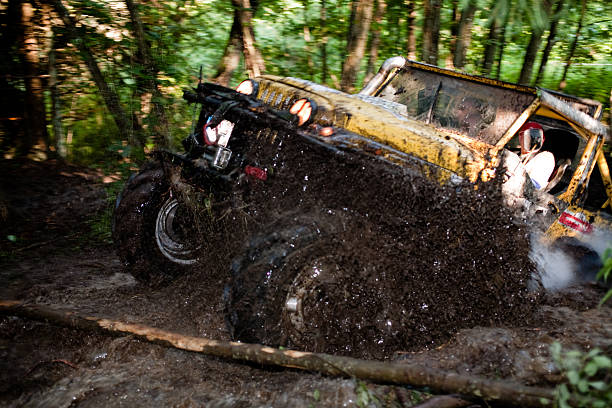Scaling New Heights: Mountain Driving and the Role of Advanced Gear Mechanisms
As the world sleeps, the hum of an engine reverberates against the mountain's cold stone, carving a symphony in the early morning silence. A car ascends, navigating the treacherous terrain with ease. The secret lies not in the driver's skill alone, but in the underlying marvel of engineering—the high-tech gear mechanisms.

Charting the Journey: From Simple Gears to Sophisticated Mechanisms
The history of automotive gear systems is a testament to human ingenuity. From rudimentary gearboxes of early models to the sophisticated systems of today, the evolution has been both dramatic and impactful. Early cars were equipped with simple gear mechanisms that required drivers to manually shift gears, a task demanding skill and dexterity.
The advent of automatic gearboxes in the 1940s revolutionized the driving experience, enabling drivers to concentrate more on the road than the gear lever. However, it was the development of advanced gear mechanisms tailored for specific driving conditions, such as mountainous terrains, that truly elevated automotive engineering to new heights.
Current Trends: The Pinnacle of Gearbox Technology
Today, the automotive industry is witnessing a shift towards more advanced, efficient, and intelligent gear systems. The focus is on enhancing performance, fuel efficiency, and driving comfort. Many modern cars come equipped with advanced gear mechanisms, such as hill descent control and hill start assist, specifically designed to tackle steep inclines and declines.
Hill descent control allows drivers to maintain a steady and controlled speed on steep descents without having to use the brakes. Hill start assist, on the other hand, prevents the car from rolling back when starting from a standstill on an incline. These technologies, backed by research and expert insights, are transforming the way we drive in challenging terrains.
Impact of Advanced Gear Mechanisms: Ease Meets Efficiency
The impact of these technologies is profound, extending beyond the realm of convenience. They enhance vehicle performance, minimize wear and tear, boost fuel efficiency, and significantly improve safety. Moreover, they make mountain driving, once a daunting task for many, a more manageable and enjoyable experience.
However, these technologies also come with challenges. They require sophisticated sensors, advanced software, and high-precision mechanical components, which can make them expensive to install and maintain. Despite these hurdles, their benefits far outweigh the costs.
From Complexity to Comprehensibility: Making Sense of Advanced Gear Mechanisms
Understanding the intricacies of advanced gear mechanisms can seem daunting to the uninitiated. However, at their core, these technologies operate on simple principles. Hill descent control uses sensors to monitor wheel speed and applies brakes individually to maintain a steady descent speed. Hill start assist, on the other hand, uses the car’s anti-lock brake system to hold the car stationary for a few seconds, allowing the driver to move their foot from brake to accelerator without the car rolling back.
In essence, the language of gears is one of precision, control, and innovation. As we continue to ascend new heights in automotive engineering, the role of advanced gear mechanisms in shaping the future of driving remains central.
Concluding Thoughts: The Road Ahead
As we stand at the forefront of automotive innovation, advanced gear mechanisms promise to revolutionize the way we navigate challenging terrains. Their impact extends beyond just enhancing driving comfort—they signify a leap towards safer, more efficient, and more enjoyable driving experiences. As we continue to push the boundaries of what’s possible, the hum of engines conquering mountains shall echo the triumph of human ingenuity and the relentless pursuit of progress.




